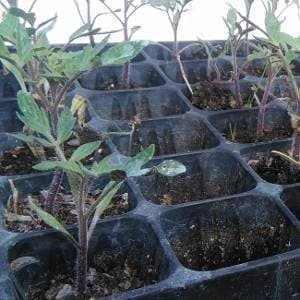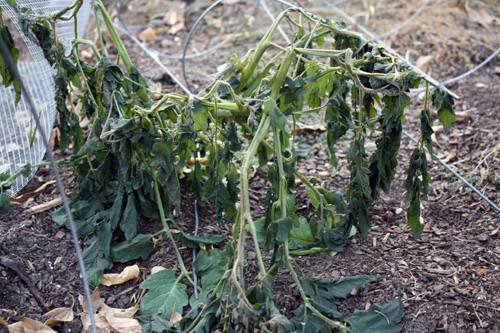When to sow tomato seeds - Best time!
Warning: Undefined variable $ad_top in /home/u376105422/domains/mundohuerto.com/public_html/main-html-en.php on line 91
Warning: Undefined variable $ad_article in /home/u376105422/domains/mundohuerto.com/public_html/main-html-en.php on line 124
Warning: Undefined variable $ad_article in /home/u376105422/domains/mundohuerto.com/public_html/main-html-en.php on line 130
Warning: Undefined variable $ad_into_article in /home/u376105422/domains/mundohuerto.com/public_html/main-html-en.php on line 153
Warning: Undefined variable $ad_into_article_full in /home/u376105422/domains/mundohuerto.com/public_html/main-html-en.php on line 154
Warning: Undefined variable $ad_inter_item in /home/u376105422/domains/mundohuerto.com/public_html/main-html-en.php on line 155
The specific dates are below, but it is recommended that you read the entire article, as they vary from one place to another.

In some publications on tomato cultivation, it is customary to give one or several very specific planting dates. This may be correct, but as long as it is taken into account that each date is associated with a specific region or climatic conditions.
The dates valid for Spain, a country of the Northern hemisphere, with a temperate climate (Mediterranean, continental and oceanic) are not applicable to countries of the Southern hemisphere or to those whose climate is notably different.
In addition, in professional agriculture, tomato plantings tend to be earlier or later, usually in greenhouses, in relation to the traditional or commonly established planting season in a place.
They do this to supply the market with fresh tomatoes when production is lower, thus the prices they obtain are usually higher.
Therefore, if you have an outdoor orchard and you cannot exhaustively monitor the growing conditions, you should not take these dates as an absolute reference.
After this brief introduction, the intelligent horticulturist will study the climatic conditions of his area and compare them with the requirements of tomato cultivation and, more specifically, the variety or varieties he wants to produce, if he has information about them.
From this analysis, you will obtain an optimal sowing date, which will be unique for the average conditions that affect your orchard, whether it is a large farm or a family orchard for self-consumption.
This is all very well, but you may wonder: when should I do the seedbed in my area? We detail it below.
When to plant tomatoes in seedbed
In general, in temperate and cold climates, tomatoes are usually sown in seedbeds, because the environmental conditions are not yet favorable for the development of the plants outdoors.
In hot climates, they can be sown directly into the ground, but this is not the norm in most places, nor is it the most practical.
The most frequent thing is that sowing begins at the end of winter or beginning of spring, depending on the harshness of the climate. The less cold, it can be done sooner, because the sooner they can be transplanted outside.As already said, the specific dates depend a lot on the climate of each place, therefore, below we will see how to determine them yourself from a series of factors.
Temperature
First of all, it is necessary to know what average, maximum and minimum temperatures usually register at each time of the year in the place where the tomato is going to be grown.
If you have access to climate data from the corresponding meteorological agency, the study will be more rigorous. Otherwise, you can resort to your own experience living in the place or, of course, ask someone who has lived in the area for a few years. If you are a farmer or used to be, much better, but you can also talk to the expert of a garden trade or a nursery.
Tomato plants freeze at -2°C, so they cannot be planted outdoors, without protection, until the risk of frost ceases.
 Source: sproutdispatch.com
Source: sproutdispatch.comIf you know (or suspect) when the last frost will occur, you should count back about 60 days in the calendar and make the protected seedbed on the date obtained, approximately.
For example, if the last frost occurs towards the end of March, the tomatoes are planted in the seedbed at the end of January. It could be done even earlier, but they would have to be transplanted into larger pots, if they grow a lot and the weather still does not allow them to be taken outside.
Humidity
The tomato is a dry season vegetable, since the high humidity and constant rains favor the appearance of diseases that can easily kill the crop.
In those climates that have a dry season and a rainy season, it is preferable to make the crop coincide with the first, if water is available for irrigation.
Taking this reference, you have to sow the tomatoes about 2 or 3 months before the start of the dry season. If the temperatures are pleasant, the time in the seedbed can be reduced to 30 or 45 days.
Seller's Recommendations
If you buy tomato seeds, you have to read the seller's recommendations, usually printed on the back of the envelope.
Among them, the most recommended sowing time for the specific variety and for the climate of the country in which they are marketed usually appears. In Spain, some brands usually indicate the planting dates for the Mediterranean and continental climates.
If the recommendations are for a different country, it is necessary to know what the climatic conditions of that country are, either by conducting a search on the Internet, in climate atlases, etc. or asking in horticulture forums so that a member can provide the information.
A trick if you don't have data
If, for whatever reason, you cannot get data on the climate of the place where the tomato is going to be grown, or if you do not want to carry out the checks, then you can resort to a simple trick that also works, although it is less exact. It's next.
Plant the tomatoes when the shelter is still needed and transplant them when it is no longer necessary.
A very simple rule that says when the weather improves and it stops being cold.It will only be necessary to know when the coat can be hung up definitively and, from that date, 60 days will be subtracted to sow.
Planting dates
Making a general approximation, as a reference, in countries with a temperate climate in the Northern Hemisphere (Spain, Mexico, USA, etc.), tomato seedlings are usually carried out in winter, from the end of December to February or March, both later the colder the climate (inland or mountainous) and the sooner if it is warmer (coastal).
On the other hand, in the temperate climate countries of the Southern Hemisphere, such as Argentina and its neighbors, sowing is also winter, but in the months of June to August.